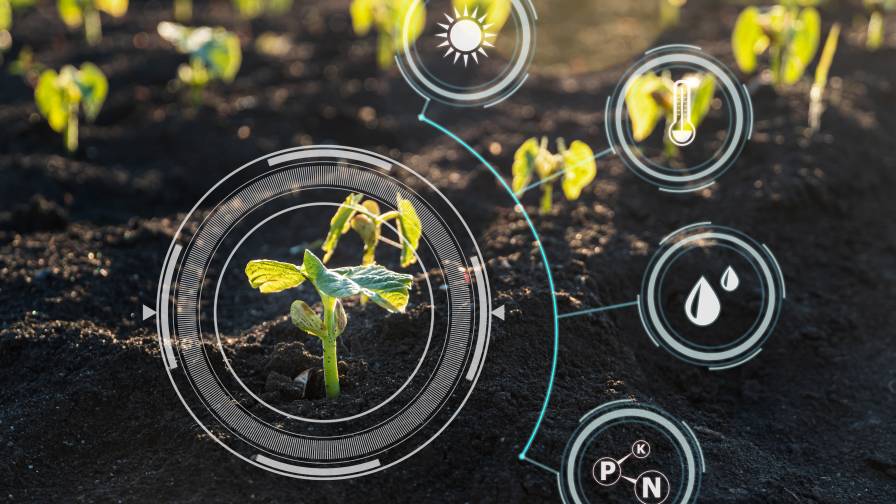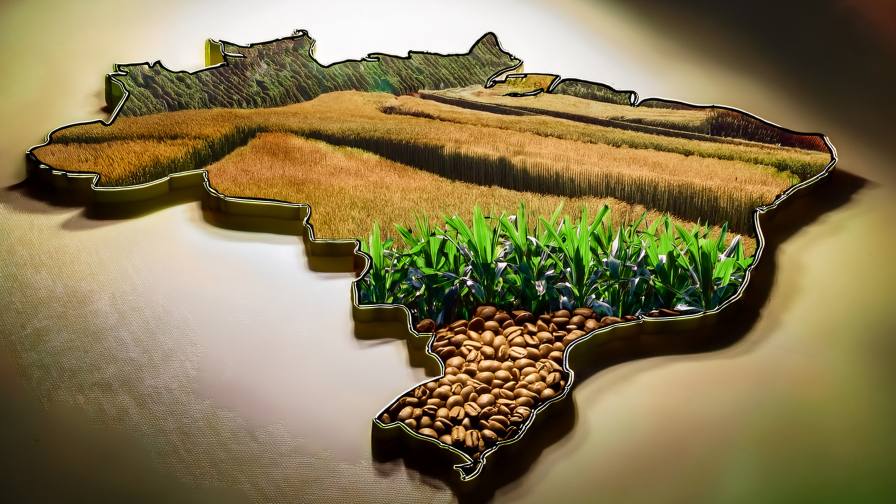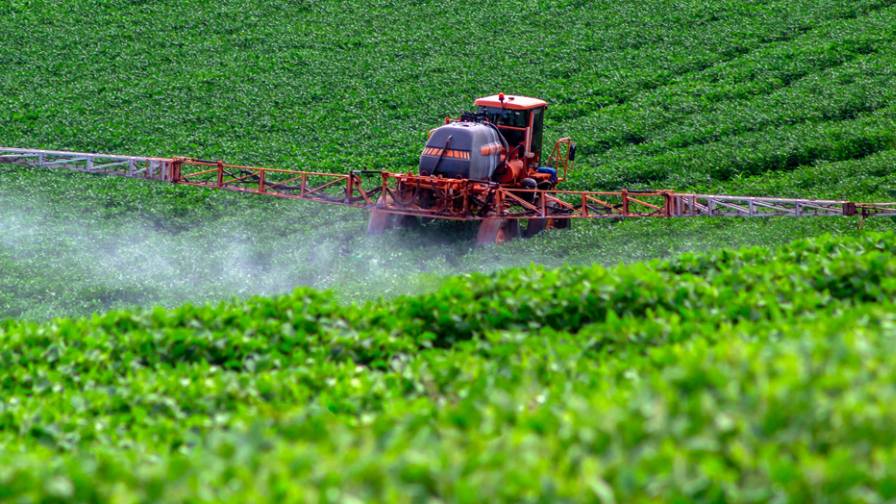Jitendra Mohan, COO da Willowood, fala sobre como empresas de insumos agrícolas podem liderar a próxima transformação tecnológica agrícola da Índia
Differentiation is no longer optional for crop input providers — it’s essential. Jitendra Mohan, Chief Operating Officer at Madeira de salgueiro, shares a roadmap for companies looking to lead in India’s dynamic crop protection and ag tech sectors.
From shifting to a crop-centric approach and embracing sustainable innovation, to leveraging precision agriculture and tapping into emerging regional markets, Mohan outlines the key trends, strategies, and opportunities defining the ag inputs market in 2025 and beyond.
ABG: How should agri-input companies start differentiating themselves in today’s market?
Jitendra Mohan: The agriculture sector is undergoing rapid transformation, driven by increasing climate variability, heightened pest pressures, and shifting expectations from farmers. To remain competitive in this evolving landscape, agri-input companies must pivot from a product-centric model to a crop-centric approach, delivering comprehensive, season-long solutions that support crops from sowing through harvest.
Key differentiators for companies embracing this shift include integrated crop management (ICM), which bundles seeds, nutrition, crop protection, and advisories into a unified offering. There is also robust Training-the-Trainer programs, which strengthen knowledge dissemination through extension workers, agri-graduates, and channel partners via public-private collaborations. Then there is digital enablement through data-driven platforms leveraging artificial intelligence and machine learning for real-time, precision agronomic advice. Additionally, research-driven innovation is critical, with a focus on developing low-residue, environmentally friendly molecules that prioritize both sustainability and farmer health. Finally, offering customized solutions tailored to specific regional agro-climatic conditions enhances local relevance and effectiveness.
In this dynamic environment, the future leaders of agriculture will be defined by their ability to integrate sustainability, digitalization, and farmer education into their core strategies.
ABG: How should agri-input companies integrate sustainability into product development, and what role does innovation play in this?
JM: Sustainability has evolved from a trending concept to the central pillar of product development in the agriculture industry. Agri-input companies must integrate sustainable practices across every stage of research, development, and the supply chain to meet both environmental and market demands.
This commitment is reflected in several key approaches, starting with the use of integrated solutions that combine chemical and biological products to minimize residues and delay resistance. Then there is the adoption of nano formulations to reduce dosage requirements, enhance efficiency, and lower environmental impact. Also there is the application of green chemistry principles to develop biodegradable, non-toxic formulations with low maximum residue levels (MRLs). Lastly, there is the shift toward sustainable packaging through recyclable, compostable, or biodegradable materials. Additionally, the development of water-smart technologies, such as rainfast products or those requiring less water, is essential in addressing the needs of water-stressed regions.
Innovation remains a driving force in advancing these goals, particularly through the creation of climate-resilient products, improved application techniques (including drone-based delivery systems), and enhanced traceability mechanisms. Ultimately, true sustainability in agriculture will be achieved only when all stakeholders — regulators, companies, farmers, and consumers — work collaboratively toward long-term value creation across the entire agriculture ecosystem.
ABG: How should companies strategize precision agriculture tools to enhance efficacy and support farmers?
JM: Technology is poised to be the defining catalyst for transformation in Indian agriculture. Over the past decade, the sector has witnessed the growing impact of innovations such as drones, soil sensors, automated irrigation systems, weather-based pest alerts, and mobile-based advisory services. To fully realize the potential of these advancements, a multi-stakeholder approach is essential.
Input companies should actively collaborate with ag tech startups, Farmer Producer Organizations (FPOs), drone service providers, and digital platforms to offer integrated, technology-enabled solutions. Leveraging real-time data for input decisions, such as optimal timing, dosage, and application methods, can significantly improve efficiency and outcomes. Customized advisory systems, tailored by geolocation and crop type, will further boost productivity while minimizing input waste. Additionally, the development of affordable service models, such as shared infrastructure or subscription-based access, can make advanced technologies more accessible to small and marginal farmers.
When precision agriculture tools are deployed in tandem with robust extension services, they have the potential to transform not only the productivity but also the profitability of Indian agriculture.
ABG: What challenges and opportunities exist for companies expanding into emerging Indian agri-markets, and which markets are promising?
JM: Indian agriculture continues to face several structural challenges, including marginal landholdings, fragmented farms, limited risk-taking capacity, and high price sensitivity among farmers. Additionally, a heavy reliance on informal information sources and a lack of infrastructure for last-mile delivery further hinder progress.
Despite these barriers, the sector presents immense opportunities. There is significant untapped potential to improve yields and produce quality, driven by rising awareness and the gradual adoption of advanced technologies and practices. Government initiatives — such as the promotion of Farmer Producer Organizations (FPOs), support for ag tech incubators, and targeted subsidy schemes — are playing a critical role in enabling this transformation. Notably, a new generation of young, digitally savvy farmers is more receptive to innovation and sustainable practices.
Emerging agricultural markets such as Bihar and Jharkhand (with strengths in vegetables, pulses, and horticulture), Odisha (noted for its growing number of FPOs and supportive policies), Eastern Uttar Pradesh (where yield interventions are critically needed), and regions like the North-East and Chhattisgarh (offering potential in niche and organic farming) are gaining prominence. These geographies call for a phased, long-term strategy centered on farmer education, deep engagement, and on-ground demonstration to ensure sustainable and scalable impact.
ABG: What significant trends in Indian crop protection and ag tech will shape the industry in 2025, and how should companies prepare?
JM: The Indian ag tech and crop protection sector is poised for transformative growth, driven by several emerging trends. Green and safer chemistries are expected to dominate future product portfolios, reflecting a growing demand for eco-friendly and sustainable formulations. Data and digitalization will play a pivotal role, with AI-powered advisories, satellite imagery, and IoT-enabled devices revolutionizing input planning and precision application. Increased farm mechanization — through the adoption of drones, precision sprayers, and automated tools — will not only reduce labor dependency but also enhance cost efficiency.
Meanwhile, regulatory frameworks are evolving, with stricter norms anticipated around maximum residue limits (MRLs), labeling, packaging, and environmental compliance. Global export opportunities will increasingly hinge on meeting traceability standards and aligning with ESG requirements. Furthermore, biologicals and biostimulants are transitioning from niche supplements to core pillars of integrated crop management strategies.
To remain competitive, companies must proactively invest in R&D focused on green products and digital solutions. Establishing robust compliance and traceability systems, upskilling internal teams and distribution partners in sustainable practices, and fostering collaboration with startups, government bodies, and academic institutions will be critical. Those that embed innovation, sustainability, and digitalization into their core operations will be best positioned to lead in this evolving agricultural landscape.






